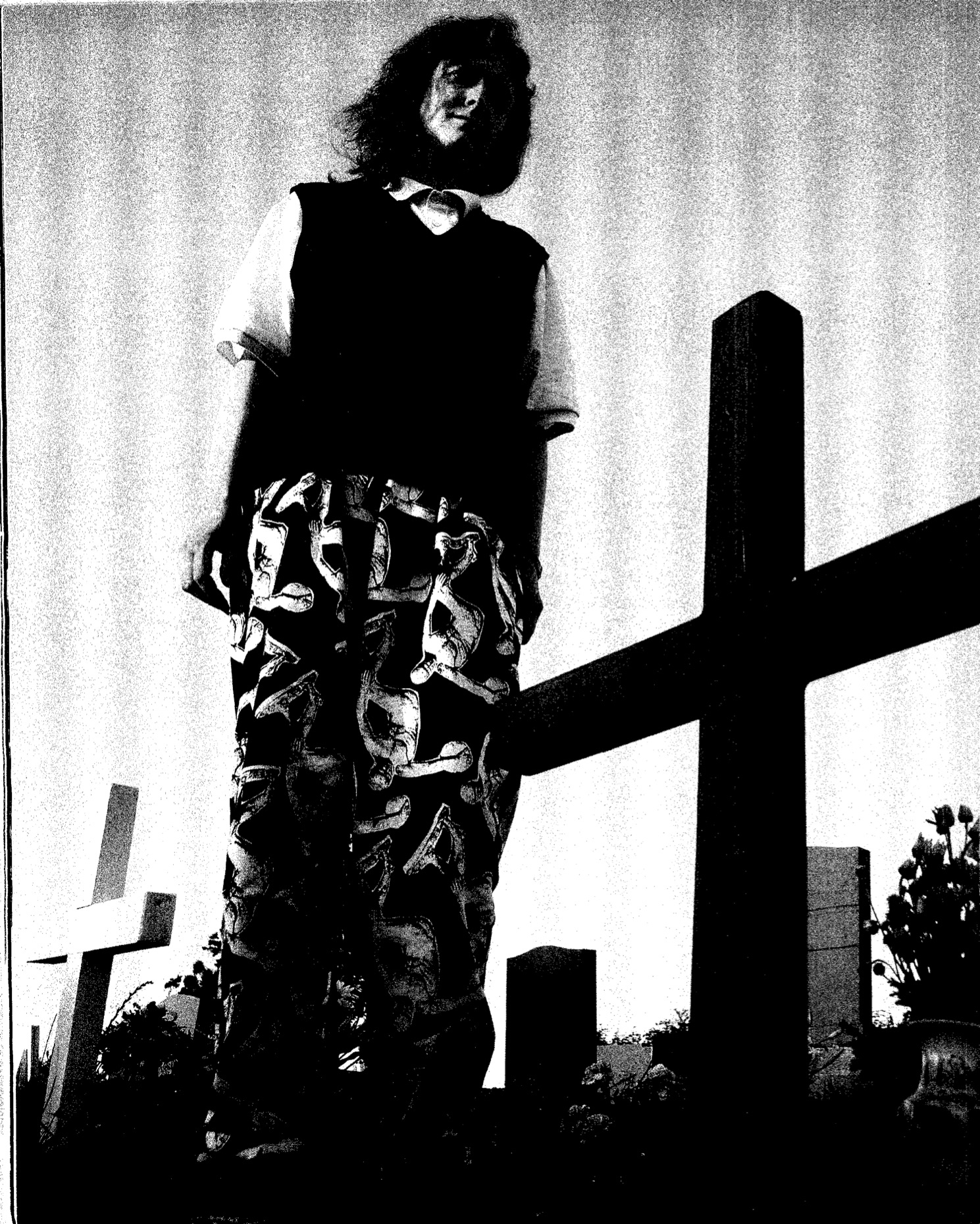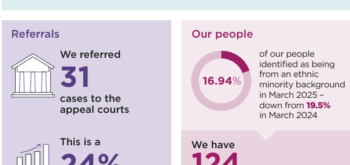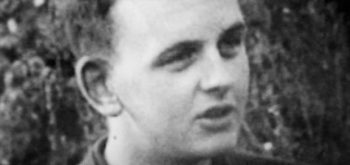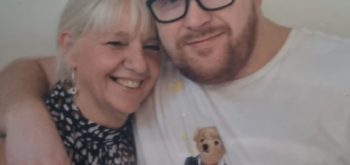Truth and justice – like truth and journalism – should be indivisible
 David James Smith is an investigative journalist who joined the CCRC. He reflects on his move from poacher to gamekeeper. This article is an edited version of an rticle that appears in Proof magazine, issue 2 – buy it here
David James Smith is an investigative journalist who joined the CCRC. He reflects on his move from poacher to gamekeeper. This article is an edited version of an rticle that appears in Proof magazine, issue 2 – buy it here
One evening in mid 1993 a young woman, Cheryl Tooze then living in Orpington, Kent became anxious when she was unable to make contact with her parents by phone at their farmhouse home in the Vale of Glamorgan, south Wales.
Her boyfriend, Jonathan Jones set off on the drive down the M4 to find out what was wrong. By the time he arrived, in the early hours, the police had been called amid signs that something alarming had happened. While the police searched the farm, they failed to secure it as a potential crime scene and Jonathan sat at the dining table where a cup and saucer from the Toozes’ best china were already in place.
It was not long before the bodies of Cheryl’s parents, Harry and Megan Tooze were found hidden in the cow shed. They had both been shot in the back of the head at close range. In 1995, Jonathan Jones was convicted of their murders.
Factually innocent
I know people say it’s always the quiet ones and that we all have it in us, in the right circumstances but, really, a less likely murderer than Jones it is difficult to imagine. Even the trial judge thought so, and, controversially, said so.
I met Jones in prison, where he seemed a forlorn, hapless figure and, as a journalist, I played a small part in promoting his case that he had been wrongly convicted. In time his factual innocence would be asserted beyond any doubt. It is only now, in my new role, that I recognise how rare that is.
To date, to the best of my knowledge, Jones remains the only factually innocent convicted murderer I have ever encountered. But, of course, that is not entirely the point…

It seems like only yesterday that I dragged a wheelie bag across the cathedral square in Birmingham, past the memorial to the 21 people who were killed in the city’s 1974 pub bombings, and into a new career as a Commissioner at the Criminal Cases Review Commission. In November I will have been in post for three years but I was a journalist for very much longer.
Some journalist colleagues and friends tried to dissuade me when I jumped ship. I was a poacher not a gamekeeper they said. Do you really want to join the ‘great and the good’? I did want to do good, I felt constrained as a journalist and there was no doubt, as a job and a way of life, the best days of journalism were already behind me. The decline of print, the loss of revenue – the prospect of a digital future in which news is free and comment even cheaper was not attractive. Good reasons then, for the change, but it has not always been an easy transition.
I wear a tie much more than I used to. I am wearing one now. I never used to write articles wearing a tie, for heaven’s sake. I worry constantly about any signs that our organisational independence is under threat. I have to take advice, seek permission, before I go off and do things that I previously just got on with. ‘No, David we can’t just go and knock on that reluctant witness’s door.’ Quite right, no doubt.
There are rules, policies, guidelines. I am bound by an entire Act (The Criminal Appeal Act 1995). The Act which led to the Commission’s creation is a marvellous and potent tool against injustice, enshrining our separation from the judiciary and the state, conferring great powers upon us which we must and do take care to use appropriately. But it is an awkward specimen too, notably in its ‘predictive test’ requiring us to second-guess how the Court of Appeal may react to our referrals.
Some argue that test is inherently flawed but, while I think it is right it should be kept under review – and the Commission’s internal debate about its role is constant, probing, unceasing, perhaps even a little exhausting sometimes. No organisation ever tried harder to get it right – I am yet to be persuaded a different test could be more effective.
I know all about lurking doubt, but I stand with those who question how such a test could be properly applied. It may be significant that in nearly 20 years the CCRC has never used, as a standalone ground of referral, the provision at Section 13(2) of the 1995 Act which allows it to refer a case to the Court of Appeal in the absence of something tangibly new where exceptional circumstances justify making the referral.
If convicted criminal A lobbies louder and harder than convicted criminal B, gathers support behind him, or her, creates a noisier public clamour in support of his self-professed innocence, does that mean the doubt in A’s case lurks greater? How can you measure doubt? What does it look like?
What it can usefully do, I think, is drive you on to try and find some evidential basis for the claim. This is particularly so in the large number of historical sexual abuse cases where corroborating evidence can be virtually non-existent and it boils down to who seems more plausible in their testimony. They are often troubling cases not easily resolved, each one of them requires careful thought and analysis.
What ‘doubt’ cannot do, though, is blind you to the weight of the prosecution case, the evidence that caused the conviction in the first place. I all too often read articles about alleged miscarriages that ignore the ill-fitting details to reinforce a point of view. No wonder viewers, readers and the social media commentariat think A or B or both are innocent when they haven’t heard the full facts – the truth.
People think journalists are cynics and some are, to be sure but the best of them are mostly plain sceptical and it may surprise many people to know they can be idealists too, with a romantic attachment to the truth, as I had, and still have.
Of course I am not so naive that I do not understand the many ways in which the truth can be disguised, buried, manipulated and misunderstood. I knew it was often not ‘get-at-able’. I know it can get lost in the past, I recognise the fragility and the failings of memory and how it can be thrown away with destroyed files and archives.
Still I remember my despondency years ago hearing from a criminal solicitor friend that lawyers are not interested in the truth but in what can be proved on the day in court. That makes more sense to me now, but beyond the adversarial arena lies the Commission with its inquisitorial quest for an answer. In my view, the truth is out there, somewhere, to be found and we are inquiring after it. Truth and justice ought to be indivisible just as truth and journalism ought to be too – lofty aims, maybe, but good places to start.
When I began writing for The Sunday Times magazine in the mid 1990s I did not precisely embark on those articles to find and try to correct miscarriages of justice, but there is no doubt that broader concepts of justice, fairness and civil rights loomed large in much of my work.
Jonathan Jones’ conviction was the subject of my fourth ever article for the magazine. I spent many hours with his lawyers and with his fiance, Cheryl, whose parents had been murdered. She did not believe Jonathan had committed the crimes but, then again, among her relatives and others were those who believed she had been in on it with him too.
I will, I hope, not be accused of speaking out of turn if I say that they were an unusual couple, more than slightly otherworldly. Cheryl, freshly orphaned, was preoccupied with her dreams and there was no doubt that Jonathan’s ‘not quite on the planet’ demeanour had contributed to his downfall.
He claimed to have been mooching about the streets of Orpington at the time of the murders but could remember very little detail and no-one remembered him. His alibi looked shaky. Then, his thumbprint was on the saucer with the cup on the farmhouse table which, the police believed the killer might have drunk from before the shooting began. Of course Jonathan had been sitting at the table by the cup and saucer later that night but he, guilelessly, refused to recall touching it. He did say he had been toying with a beef tomato which was nearby.
There was some other circumstantial evidence that in reality seemed more prejudicial than probative. Even now I would be hard pressed to muster a persuasive case for his guilt from the evidence. The trial judge evidently thought so too. In his post-trial note to the Home Secretary (as was then the practice in mandatory life sentence cases) he wrote:
‘I am bound to record that the verdict caused me some surprise. There were undoubtedly many suspicious features about Jones’s case, but at the same time many items of evidence upon which the prosecution relied as pointers to guilt, had fallen decidedly flat. But most important of all (although this must always remain a matter for the jury) was the contrast between the total ruthlessness and pitiless determination of whoever killed Harry and Megan, and the man who stood in the dock.’
The judge invited Jones’ QC to append the note to the inevitable appeal.
By the time I came along, his legal team from Cardiff – Stuart Sutton and his colleague Layla Attfield – had already begun trudging the streets of Orpington in search of the clinching point to prove Jones’ alibi that had eluded them before trial. His alibi had relied on a sighting of lift engineers at his home, but the timings had been unverifiable.
Privately, they shared Cheryl’s unwavering belief he was truly, actually innocent.
Factual innocence seems to be regarded by some as the Holy Grail of miscarriages. In the United States, the lawyer Barry Scheck oversees an Innocence Project which really is narrowly focussed on absolute innocence that can be proved by exculpatory DNA evidence. It does not trouble itself with seeking to overturn convictions that are merely unsafe on what are sometimes called ‘legal technicalities’.
Many of Scheck’s applicants are African American men from the old South convicted of murders and sexual crimes after investigations and trials where racism and prejudice stood before fairness and justice. Still, you may think, as I do, that is a rather narrow view of miscarriages. What about all the other wrongly convicted African Americans who cannot show their innocence through DNA? There is no Criminal Cases Review Commission, either federal or in any state in America.
At the Commission we have a broader vision. We are not concerned with the absolutism of innocence. It quickly became apparent to me that you will almost never know for sure whether applicants are innocent or not. As I said, you may set off in search of the truth, but that does not mean you will reach it. You may THINK applicants may be innocent but that is not the same as knowing.
The question for the CCRC is, what is there to know that is new, that the jury did not hear at trial, that might – MIGHT – have made a difference to their verdict?
The CCRC is a place of last resort. Without it, there would be no way back to the Court of Appeal. Our test is the real possibility test: Is there a real possibility that the Court of Appeal will find the conviction unsafe (or the sentence wrong or manifestly excessive) if it is referred.
Yes, we must consider the Court of Appeal’s likely approach but the decision remains ours. Once we decide to refer, the Court must hear the appeal. That is our strength and that is why, in my view, the CCRC must continue to be robust, independent, and fiercely alert to wrongdoing and incompetence within the criminal justice process.
Our legal analysis must be clever and exact but our investigations must be thorough and unstinting. We must never be so in thrall to the Court of Appeal that we stop making decisions in the best interests of justice. We must loudly proclaim our role so that people know we are out there, providing access to justice and pointing out when and where things go wrong.
Of course, this kind of work takes time and when our intrays are heaving with applications from prisoners and ex prisoners claiming to be victims of injustice we cannot adopt a one size fits all approach.
Some cases are unlikely to go anywhere, and will be rejected more summarily than others. Even that is fraught with obvious dangers, however. How can we be sure that rejected case is not a hidden miscarriage? There is no easy answer to that question except that each case turns on its facts and the possibility that there is something new to be known or argued or some error in the application of the law to be corrected, that carries sufficient weight in the context of all the evidence.
It is often – even most often – the outcome that nothing new has been raised and that no amount of looking by us will find something that is not only new but significant enough to undermine the verdict of jury.
Thankfully that was not what happened in the case of Jonathan Jones. Assiduous research from Jones’ lawyers had proved the movements of the lift engineers Jones had seen by a combination of till receipts and other investigation of their actions that day. There was no doubt that Jones really had been in Orpington at the time of the murders.
Jones was released in 1996 and never needed the services of the Criminal Cases Review Commission, which was founded the following year.
The Court of Appeal though, led by Rose LJ, were not impressed with the trial judge’s comments, saying it was the jury’s job not the judge’s to determine guilt and his comments could not play any part in the appeal, in spite of defence counsel’s attempts to introduce them. ‘The question of whether he would himself have convicted the defendant did not and does not arise.’
The Court of Appeal is well known for its adherence to the sanctity and finality of a jury’s verdict but just as the Court might say that the jury heard all the evidence and were best placed to determine if the case had been proved to the correct standard, it might be argued that the judge was well-placed too and if he had concerns he had a duty to justice to make them known.
If I had been Jones, in that dock, would I have wanted the judge to speak up? His view may have been opinion, not evidence, but it was an obvious pointer that something might have gone very wrong – as indeed it had.
The murders of Harry and Megan Tooze remain unsolved.






